Tessa
In 2015, I co-founded the company Tinybots. As the lead designer I designed Tessa; a small social robot that supports people with cognitive disabilities and their families. Tessa is a small, talking robot that speaks friendly reminders, which family members can write and schedule via an easy-to-use app.
The robot is connected to the Internet at the person with dementia's house. Family members and healthcare professionals can then schedule reminders through the app remotely.
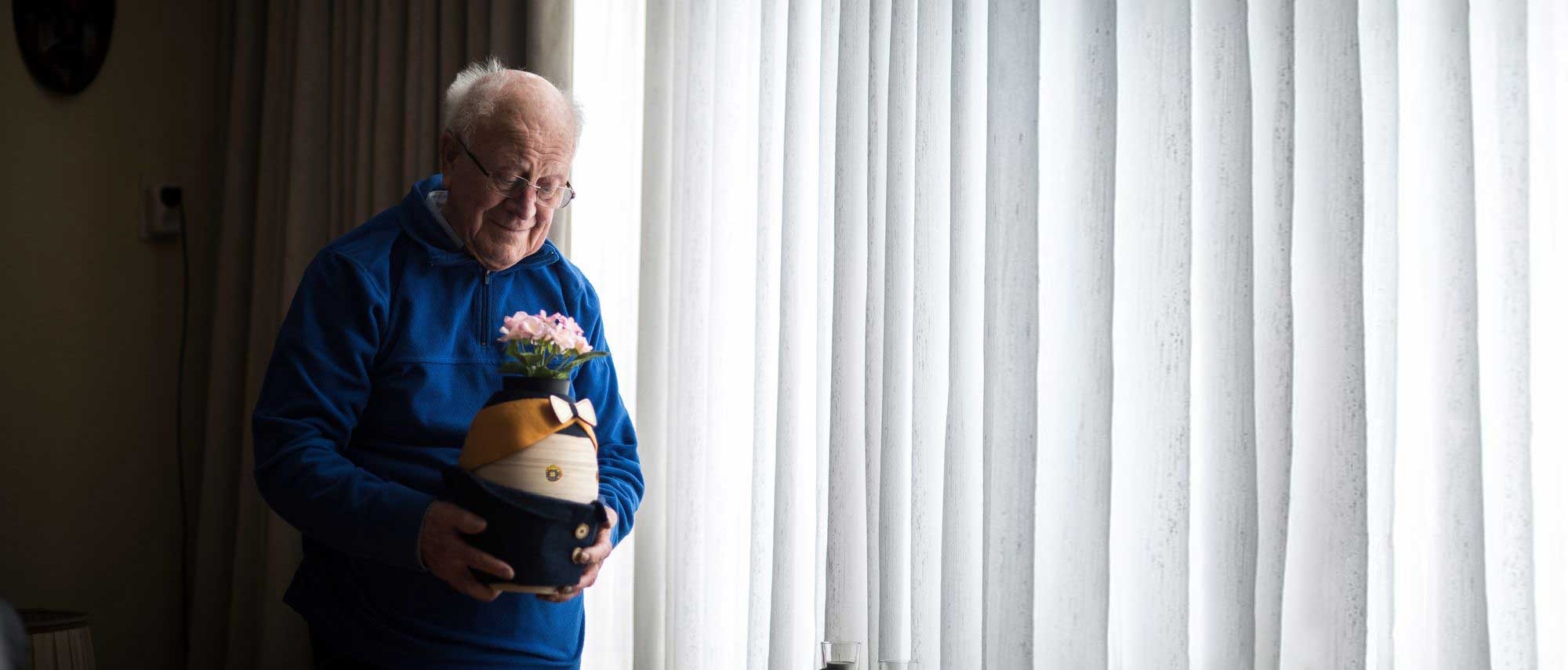
Tessa is designed to support people with cognitive or neurological disabilities, such a dementia, autism, and acquired brain injury. Tessa provides structure through the day by speaking friendly reminders, which are written and scheduled by their family members or healthcare professionals. Reminders can be as simple as:
"It's almost 8 'o clock, your favorite tv show is about to start on channel 1."
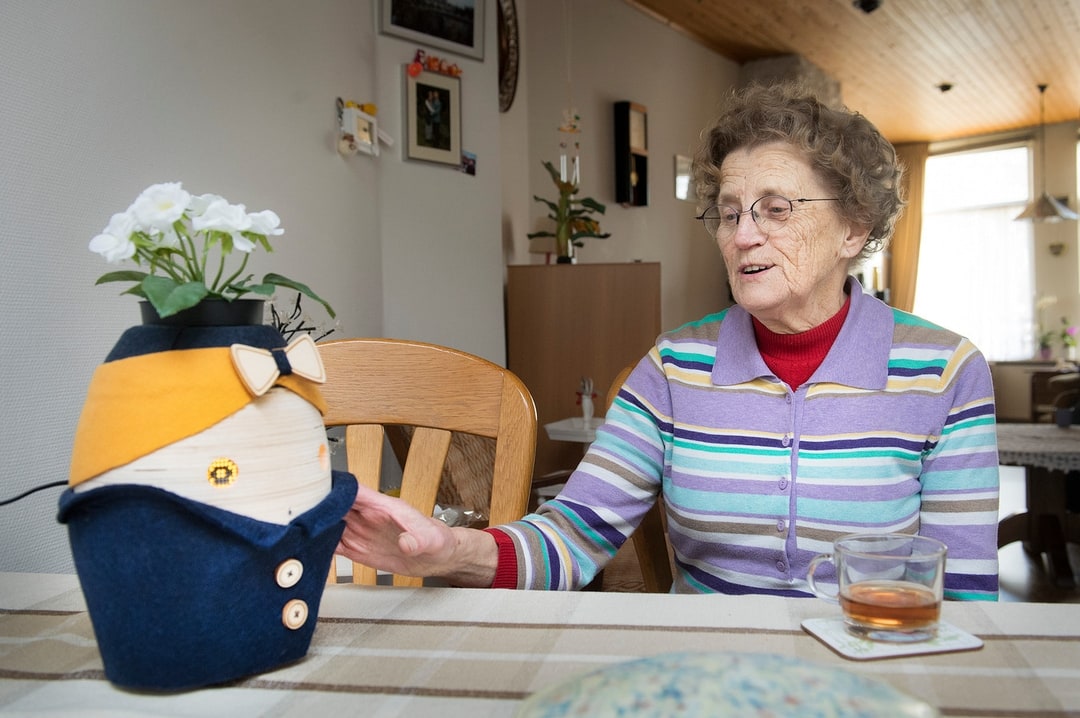
Tessa gives friendly reminders, can ask questions, and play music
Tessa was iteratively designed over the course of several years through varies stages of paper mockups, different prototypes, and beta versions. The market version of Tessa was released in early 2018, and now, over 500 Tessa's are in use.

The earliest concept sketch of Tessa (2014)
Early prototypes focused on user acceptance, to see if individuals with dementia would allow Tessa into their homes and listened to the reminders Tessa gave with her synthesized voice. Secondly, we had to refine the concept based on the added value for the person with dementia, the families, and healthcare professionals.

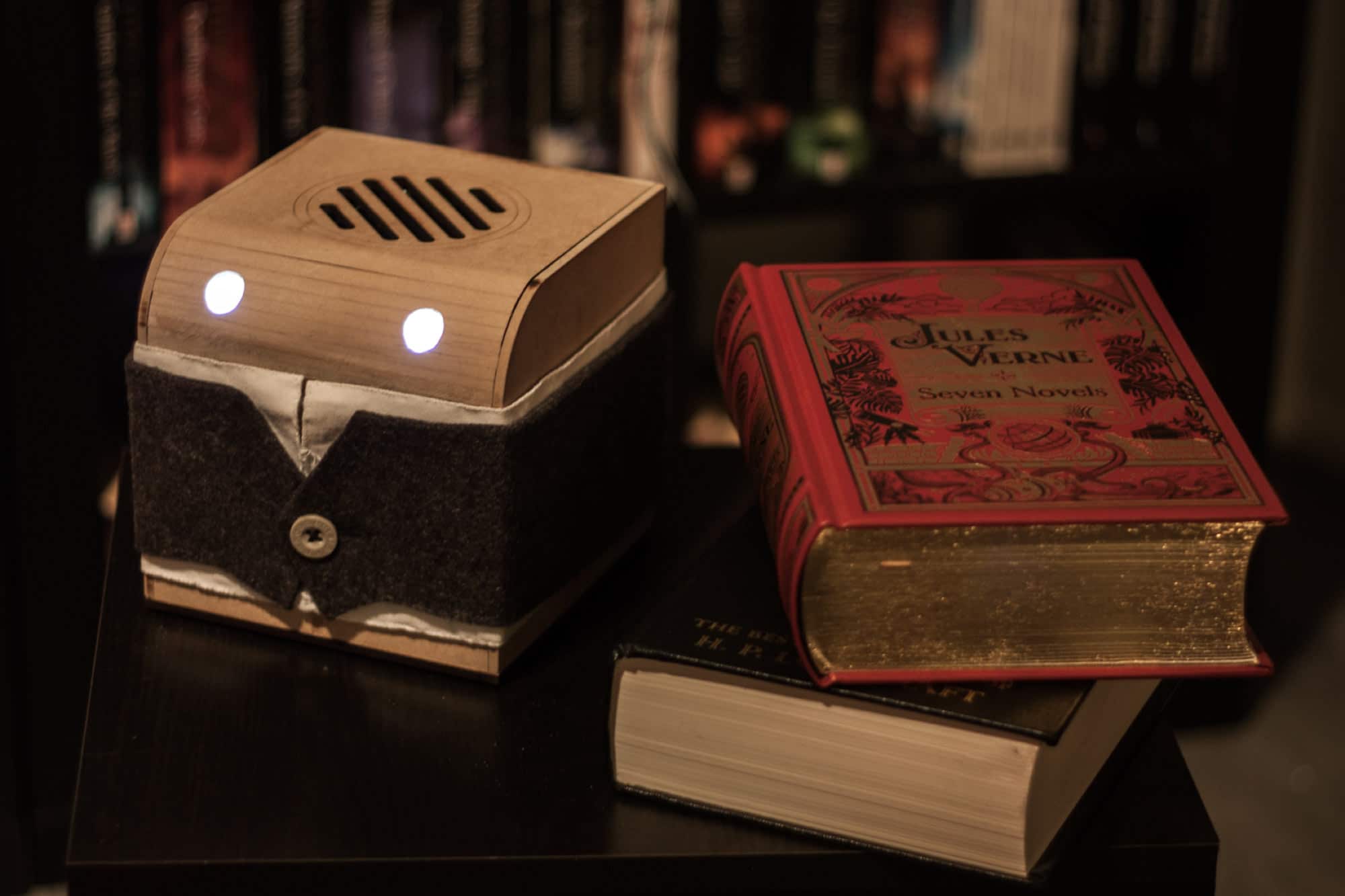
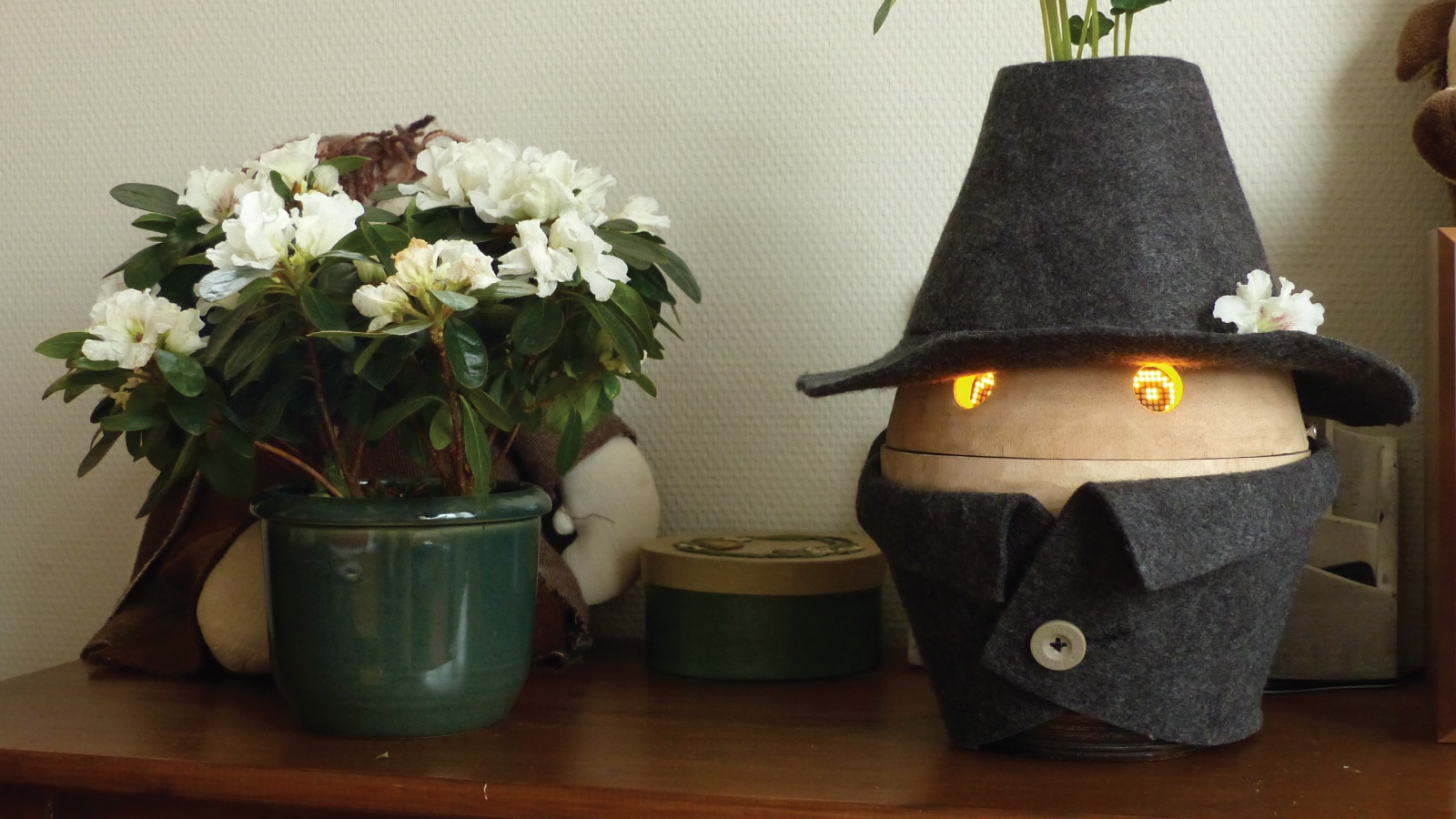
Several early-stage working prototypes of Tessa
Based on the users' feedback, field testing, extensive prototyping, and many different demo's, the concept of Tessa was refined and adjusted. The embodiment was altered and a brighter, more approachable design was created. User testing also showed that family members and healthcare professionals want very detailed control of what Tessa says and does via the app.
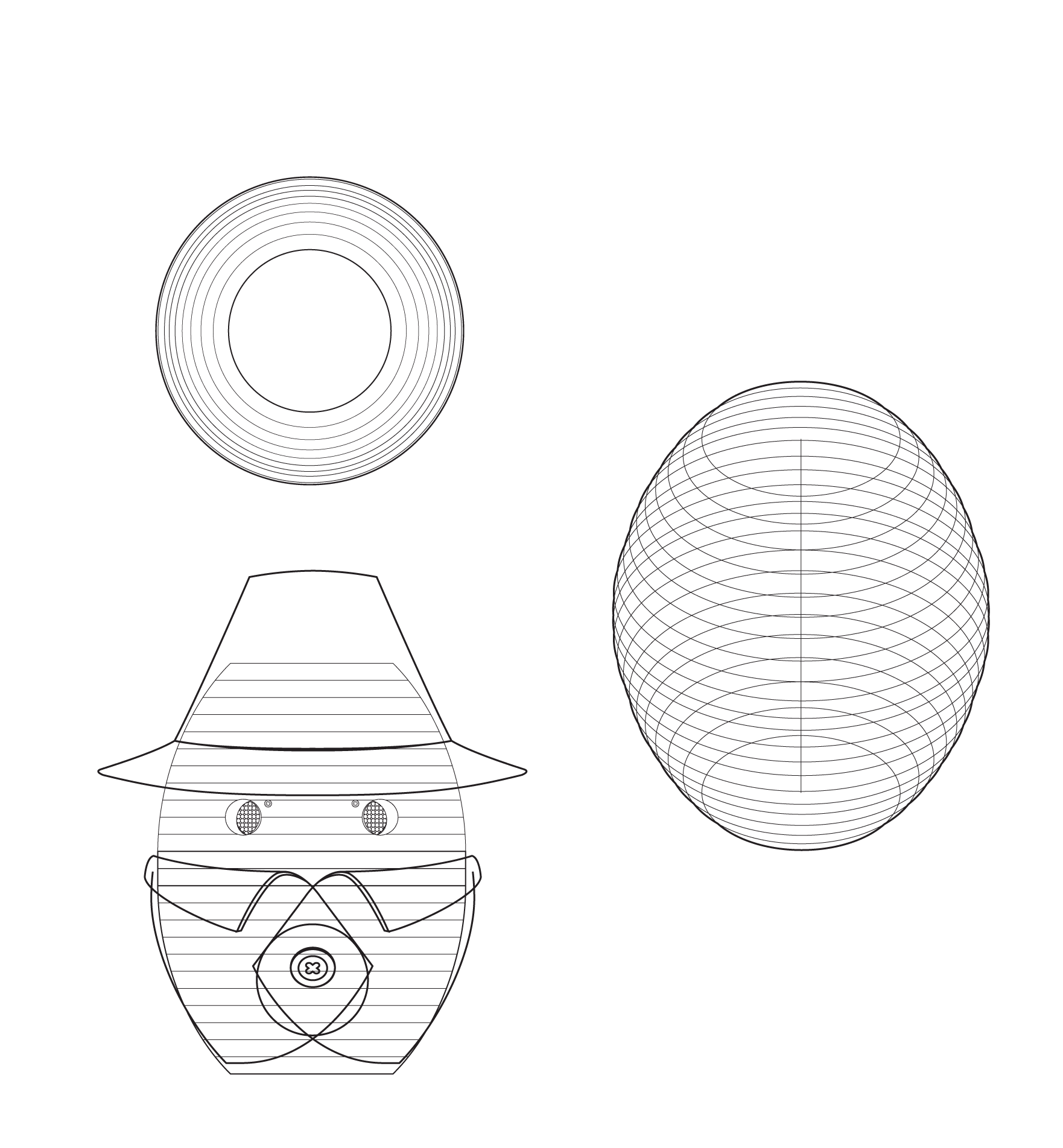
Refined versions of Tessa's embodiment
Tessa's embodiment is made out of wood and its shape has been optimized for mass production. During the beta period, we refined the hardware and figured out how to fit the internal components.
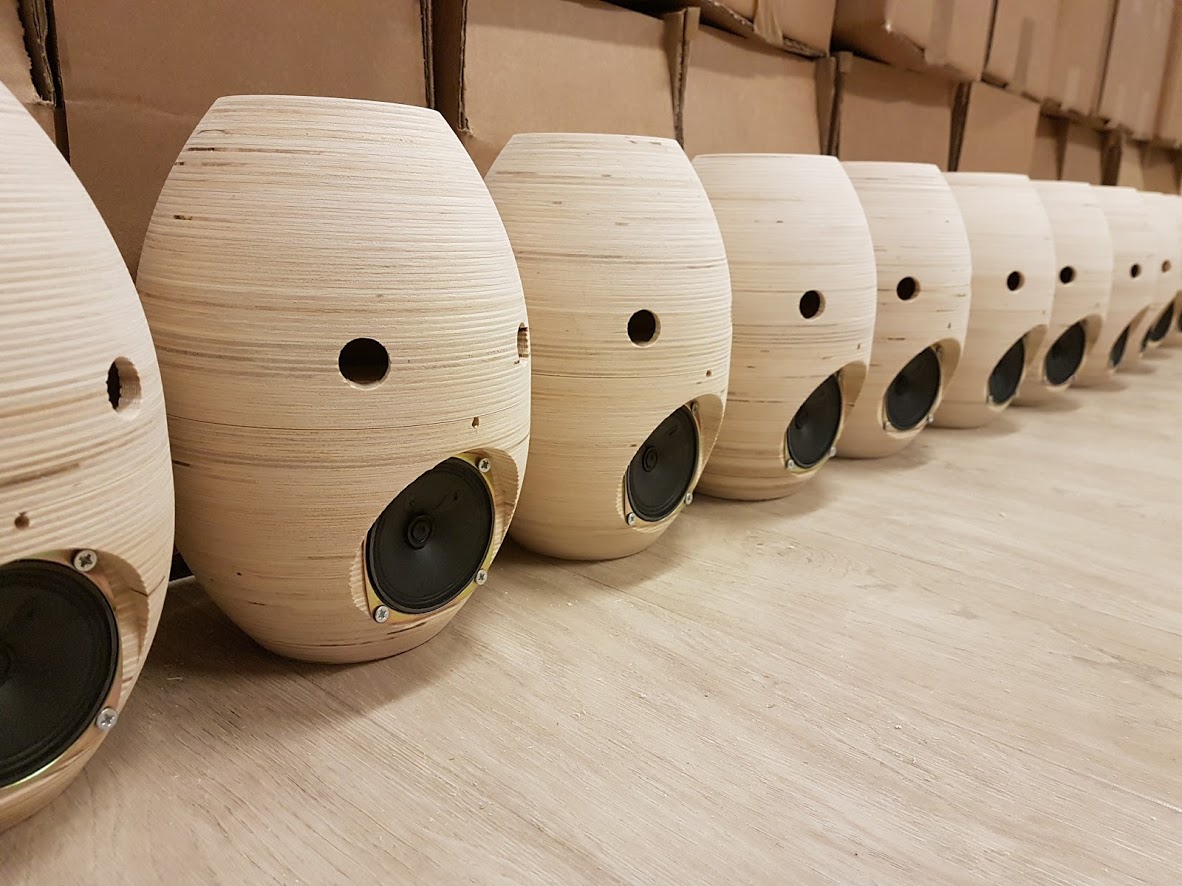
Tessa's during the assembly process
Tessa, co-developed with the end-users combined a quirky but approachable character with organic, bright materials like wood and felt. The design allowed people with dementia to recognize Tessa as an individual, without triggering many preconceptions.
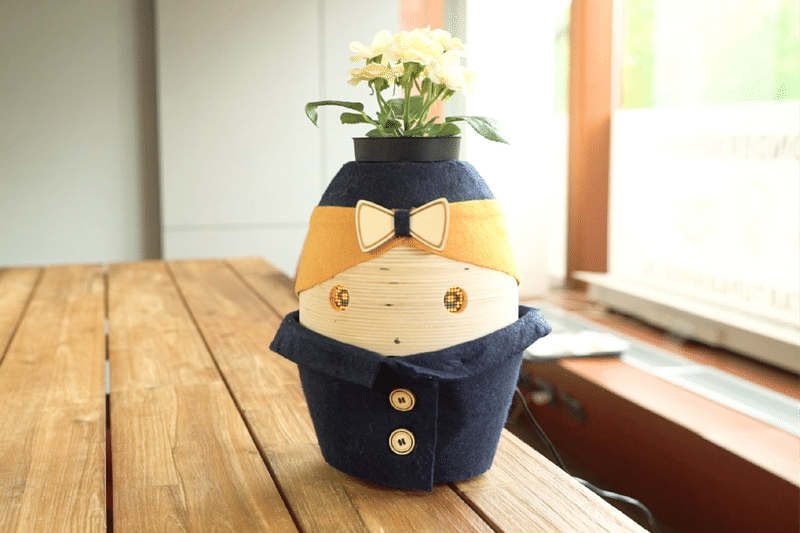
The final design of Tessa: a quirky, but friendly and warm character
For Tessa's app, a similar approach was used with low-fidelity prototypes, and iterative design. Tessa's initial set of features was limited to speaking reminders through text-to-speech, scheduled by someone remote via the app. The app was during extensive beta period with 120 Tessa's placed at 4 different healthcare sites for 12 months. Based on these trials, a music feature, speech-recognition, and conversational scripts were added through remote updates.
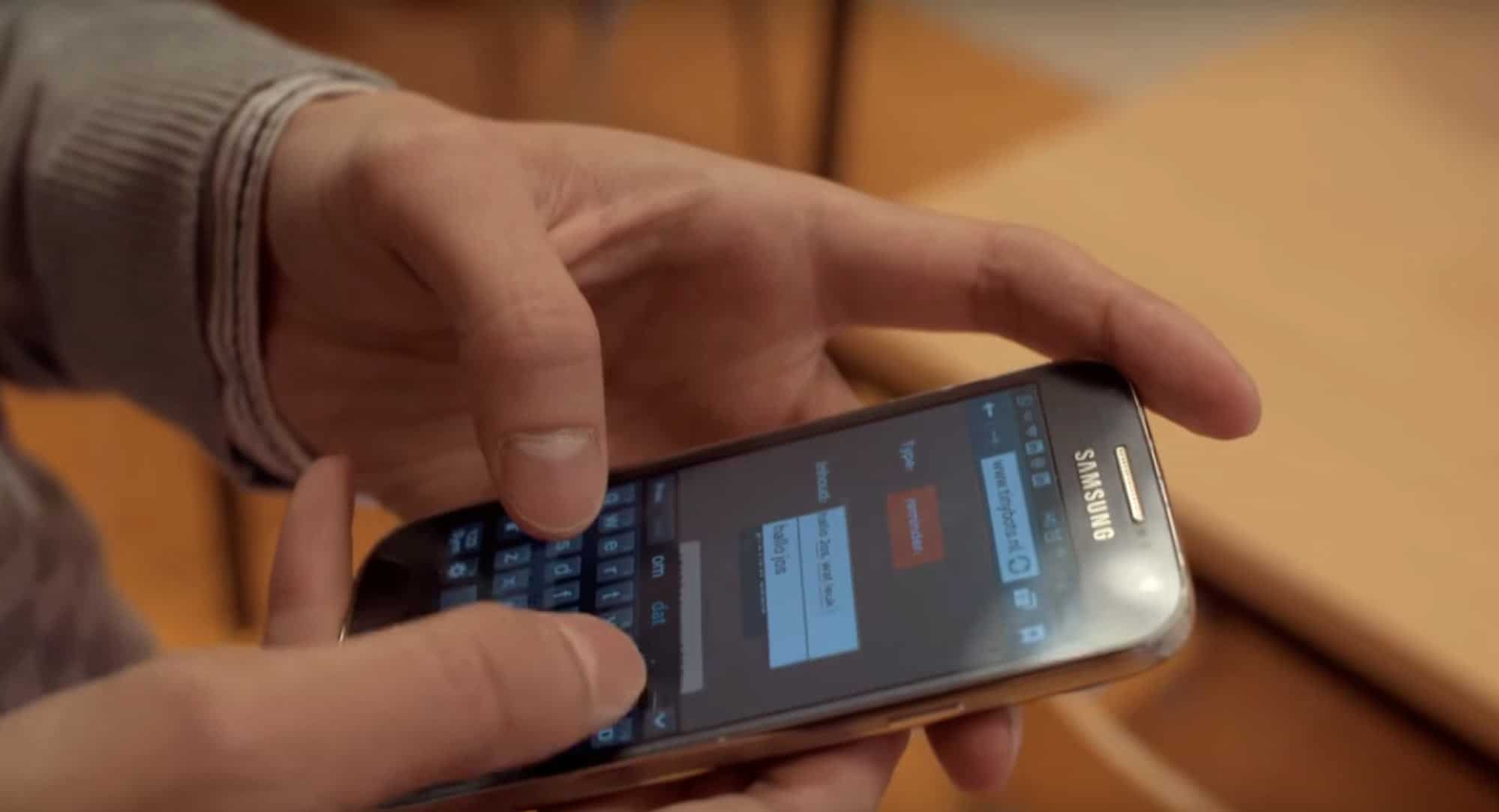
Prototype app to test the concept of scheduling reminders remotely
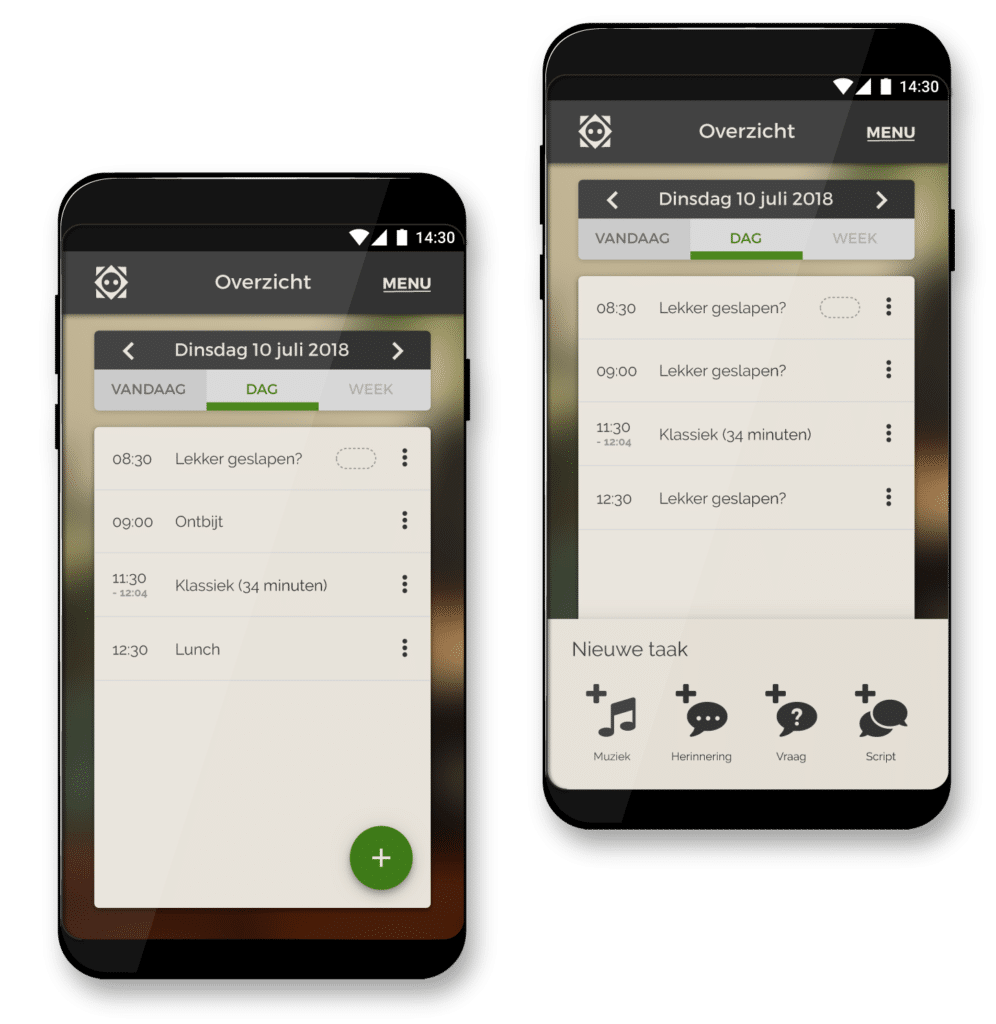
Tessa's main interface, a day-to-day calendar where you can see individual reminders
The beta period also indicated that onboarding, installation, and getting the system up-and-running is crucial for successful implementation in the healthcare domain. The whole app was reworked, based on the bottlenecks and issues discovered during the beta trials and user feedback.
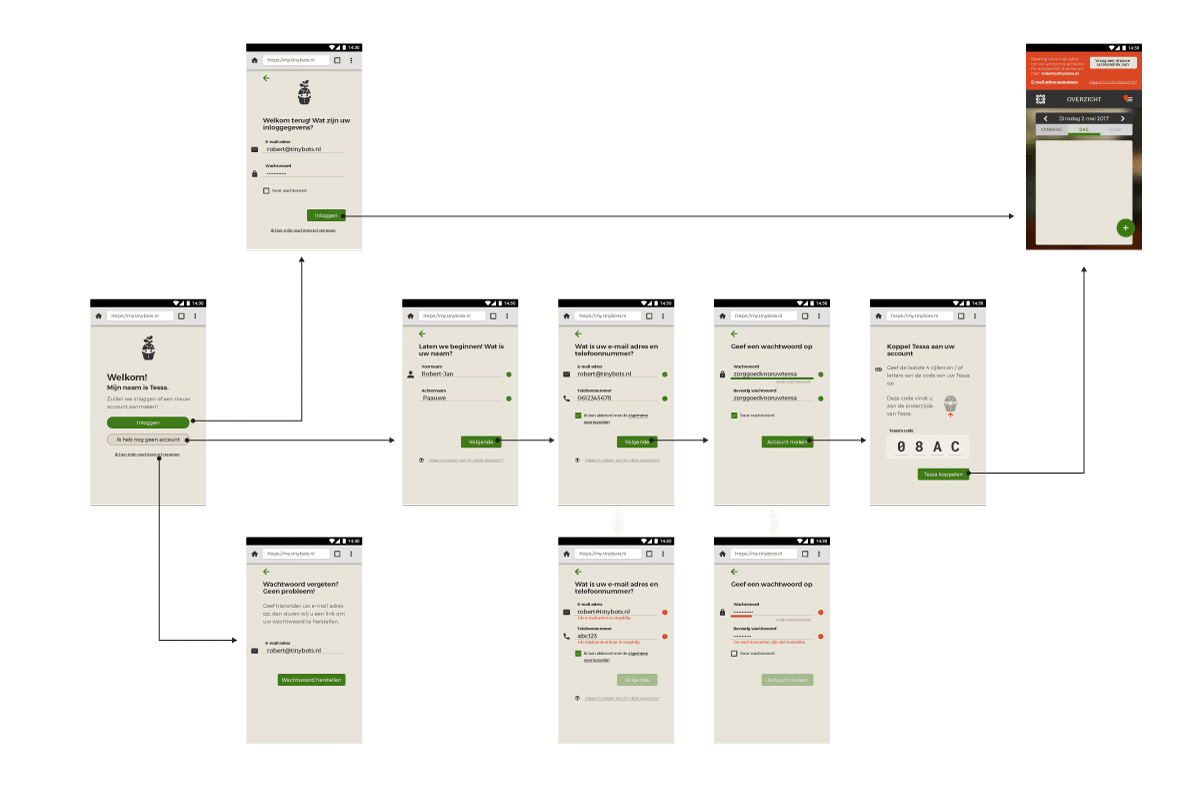
Subset of the registration flow
During the redesign, all flows regarding installation were mapped out, and the 9 step installation process was reduced to a 4 step installation process. Additionally, the app was refined and a design system was setup to facilitate future design and development.
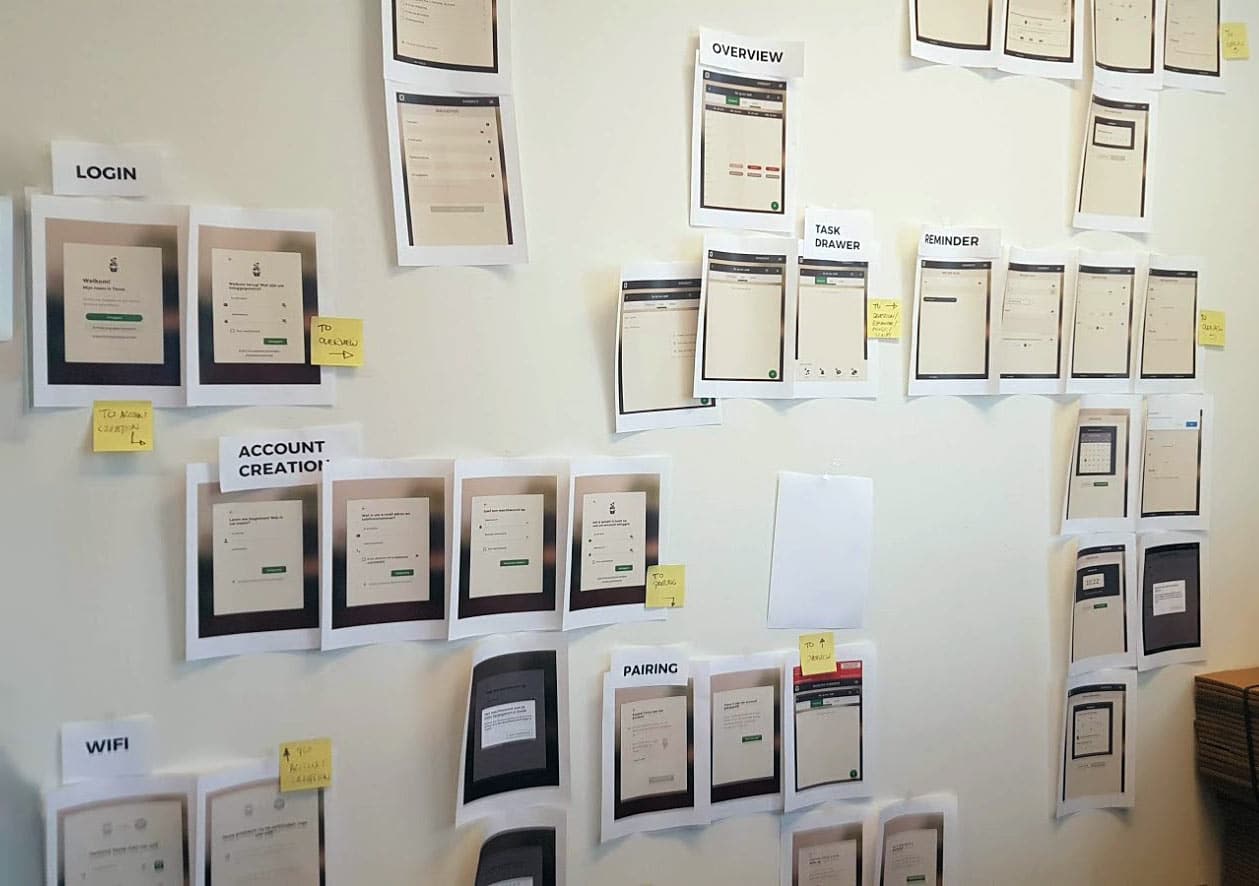
Finally, the user experience was improved by adding numbers in Tessa's eyes during the installation. Tessa starts in installation mode as a WiFi access point (1), then when your phone is connected to Tessa you can provided your WiFi details (2), Tessa is connected to your WiFi and downloads updates (3), and finally your account is registered and connected to Tessa (4).
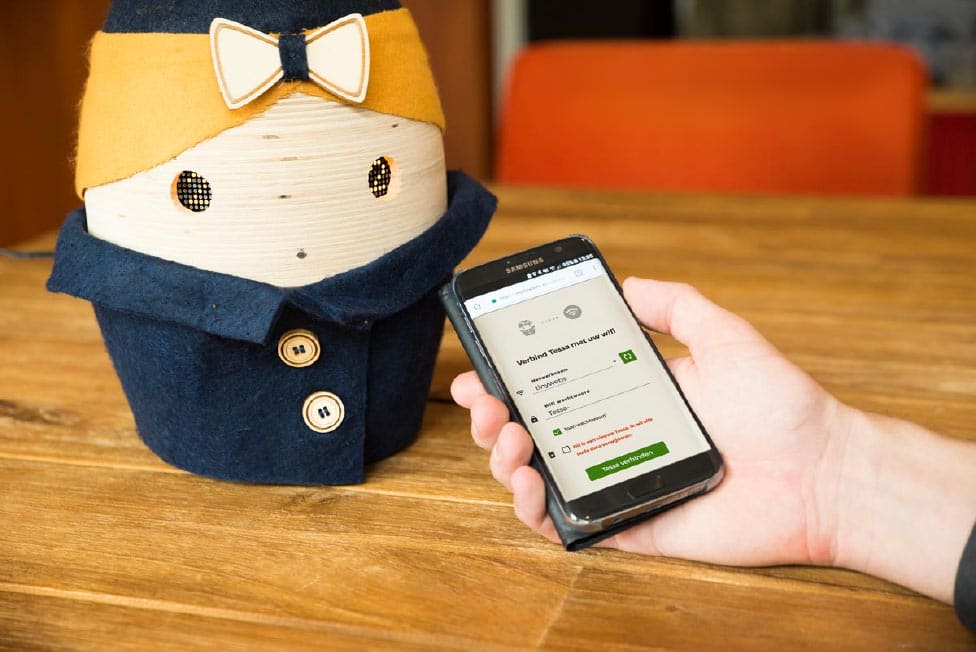
Tessa in installation-mode, the numbers in her eyes indicate at which step you are of the process
Below, you can find the market version of Tessa: optimized for mass production, designed for assembly, and with administrative software in place to take care of shipping, hardware registration, and contract management.
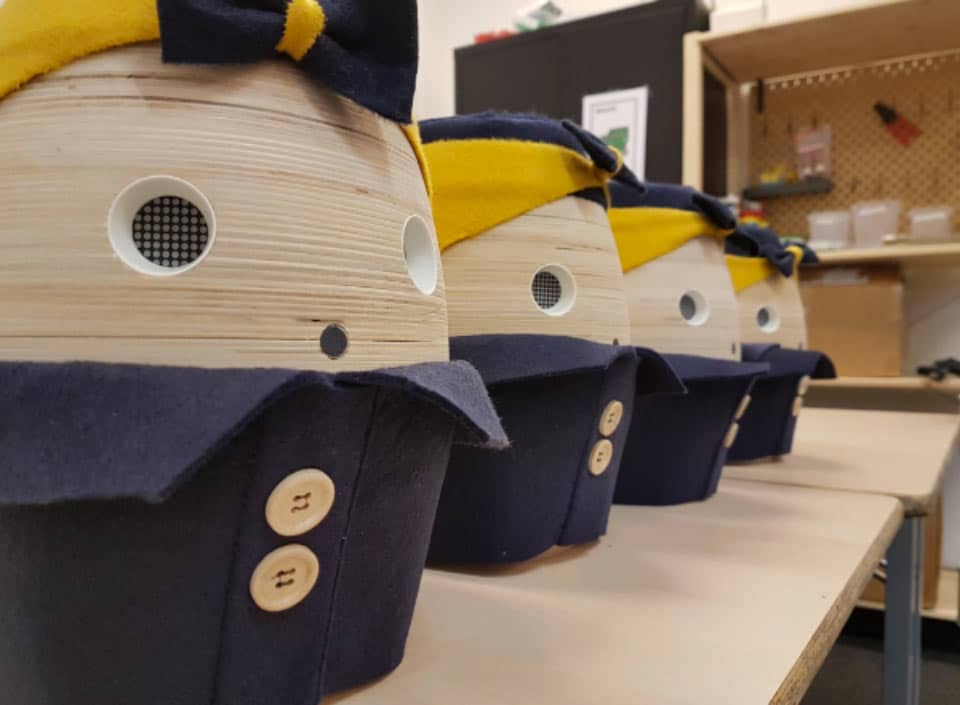
Market-ready Tessa's, right after assembly
Releasing and shipping product-service systems like Tessa also include packaging materials, user manuals, support systems, helpdesk, and repair services. For Tessa, I designed a user manual that explained the installation process, and onboarded users to plan their first reminders.
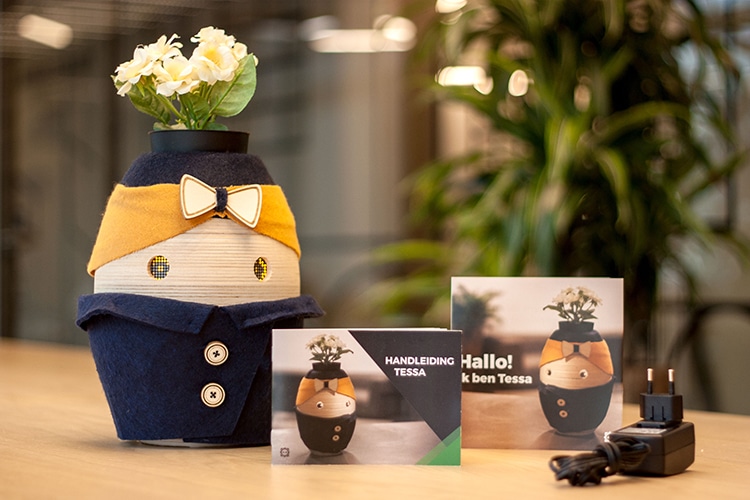
Packaging design for Tessa, including manuals
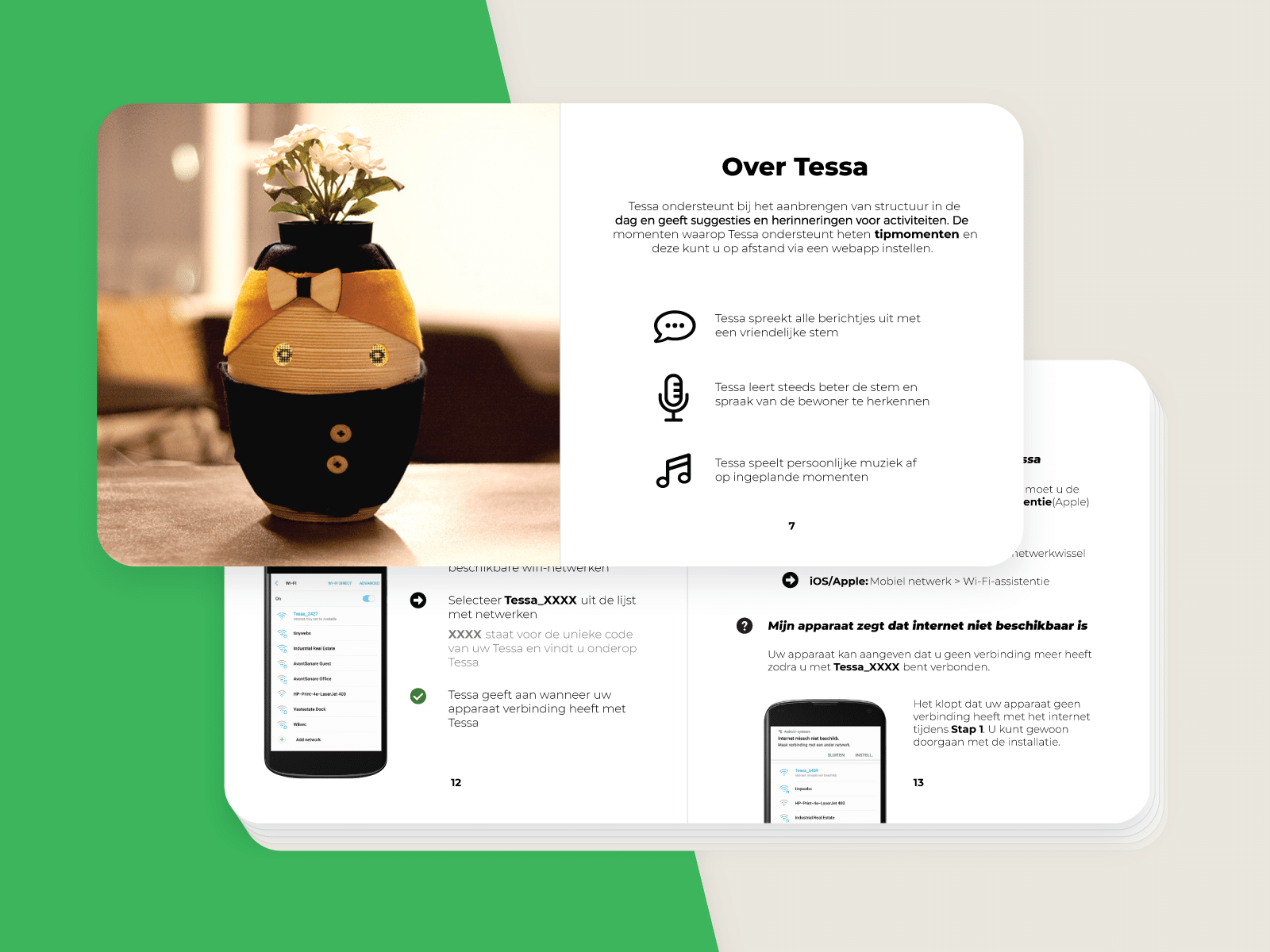
Detailed manual with hardware installation instructions and how-to-use (printed)
Collaborators:
Arno Nederlof
Erik Hoogeveen
Rochelle Simons
Wang Long Li